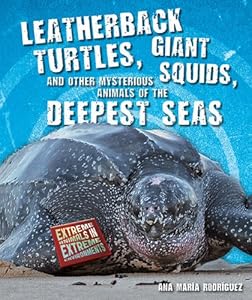Enslow author, Melissa Stewart recently attended the 21st Century Children's Nonfiction Conference on the campus of the State University of New York in New Paltz. Writers, illustrators, designers, educators, and editors held workshops for those interested in learning more about opportunities in publishing nonfiction for children.
Melissa spoke as part of the faculty panel discussing "21st Century Publishing: A Time of Transition." We asked Melissa to recap her experience at the conference. Here is what she had to say:
Recently,
I had the great privilege and pleasure of being a guest lecturer for an online
course taught by renowned children’s book author and editor Marc Aronson for
Rutgers University. The class, Nonfiction and Common Core, is intended for
students working toward their master’s degree in library information science.
In
preparation, I decided to review the rest of the curriculum and I ran across
something that blew my mind—a lesson called “Nonfiction
Taxonomy.”
What’s
that, you ask?
It
turns out that Marc and his Uncommon Corps colleagues have developed a brand new, totally amazing system
for classifying children’s nonfiction. I was so excited by the system that I
asked if I could discuss it at last weekend's conference, and Marc gave me permission.
The
classification system consists of seven broad categories:
Data: In more friendly
terms, you might call this category Fasts Facts. It includes Eyewitness Books, The Guinness Book of World Records, and
my own book Animal Grossapedia. These
are the concise, fact-filled books that groups of boys read together and
discuss.
Expository: You
might call this category Facts Plus. The facts are interwoven into a
content-area explanation. This is could be considered “traditional” nonfiction,
except that there’s nothing traditional about today’s expository titles. Their
engaging text and rich, dynamic art and design are sure to delight as well as
inform young readers.
Narrative:
This is a category we’ve heard a lot (I mean A LOT) about in the last few
years. It’s the current darling of awards committees. Narrative titles present
facts in the form of a true story with a narrative arc.
But
here’s the thing. As you learn about the next few categories, I think you’ll
see that some books have been lumped into the narrative category when there are
actually better ways to describe them.
Disciplinary Thinking:
These books reveal how scientists and historians go about their work, how they
evaluate evidence and form theories. This category might also be called
something like Experts at Work. Scientists in the Field books are the perfect
example, but if you think about it, it won’t take long to think of single
titles that do the same thing.
Inquiry:
This category could also be called Ask & Answer. In these books, the author
raises a question or a group of related questions and then seeks the answer.
Sally Walker’s Written in Bone is a
great example, but these are the kinds of books Peter Lourie has been writing
for years. And one of my favorites is What
Bluebirds Do by Pamela F. Kirby.
Interpretation: For
these books, authors research a topic widely, find their own meaning in the
information, and present the content from that point of view. Charles & Emma by Deborah Heiligman
is the first title that leaps to mind, but I’d also put books like Those Rebels, Tom and John by Barbara
Kerley and Almost Astronauts by Tanya
Lee Stone in that category. I think we’ll see more of these books in the future
because this type of presentation directly supports Common Core.
Action:
This is the trickiest category. It offers a separate spot for titles that
invite young readers to take action. The most obvious example is Citizen Scientists by Loree Griffin
Burns, but I think it’s the kind of book we’ll see more of in the future.
My
presentation was just one small bit of a fantastic 3-day conference that
focused exclusively on nonfiction. Woo-hoo. Talented authors, editors, and
other publishing industry gurus came together to discuss the future of
nonfiction, from craft and Common Core to transmedia and book promotion. Anyone
interested in nonfiction—authors, illustrators, editors, educators, designers,
digital developers—should mark the next year’s conference dates on their
calendars. It will be June 20-22, 2014 on the campus of SUNY New Paltz.
Author Note: Melissa Stewart is the award-winning author of more than 150 science books for children. She has always been fascinated by the natural world and is passionate about sharing its beauty and wonder with readers of all ages. For information about Melissa and her books you can visit her web site.



































